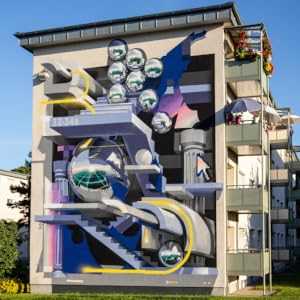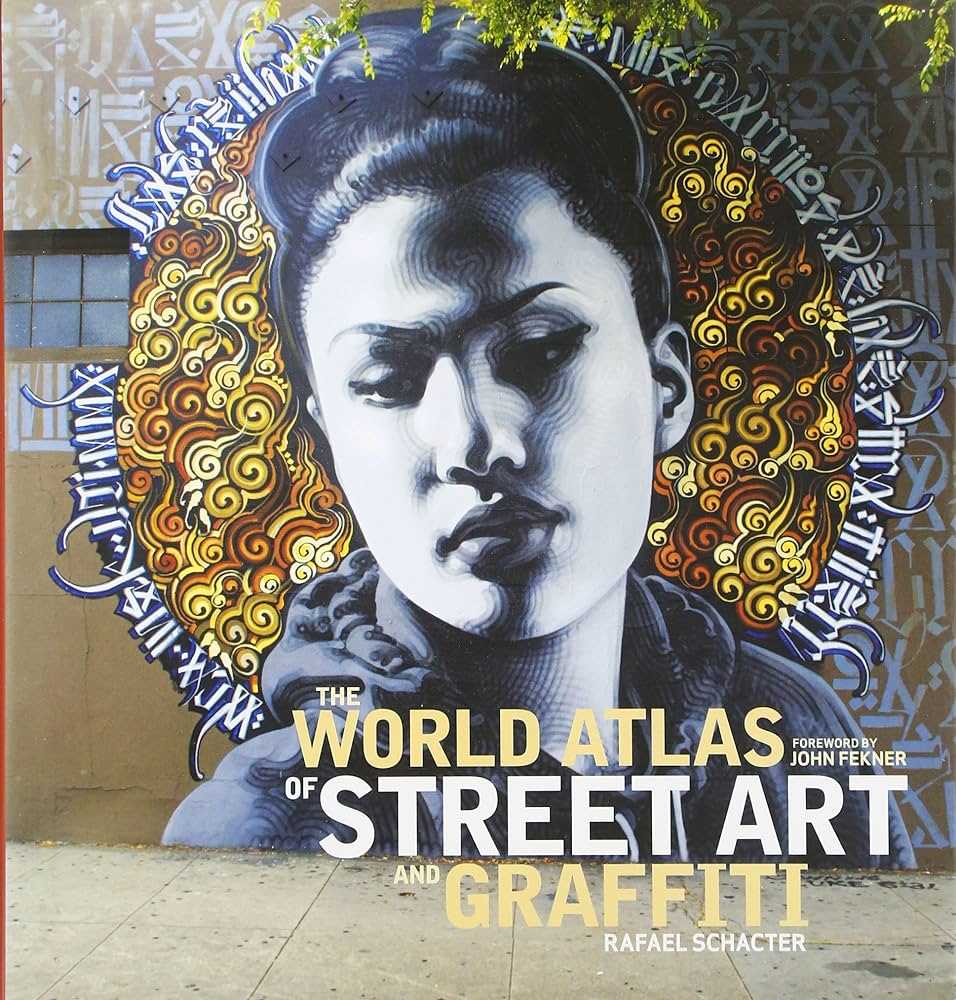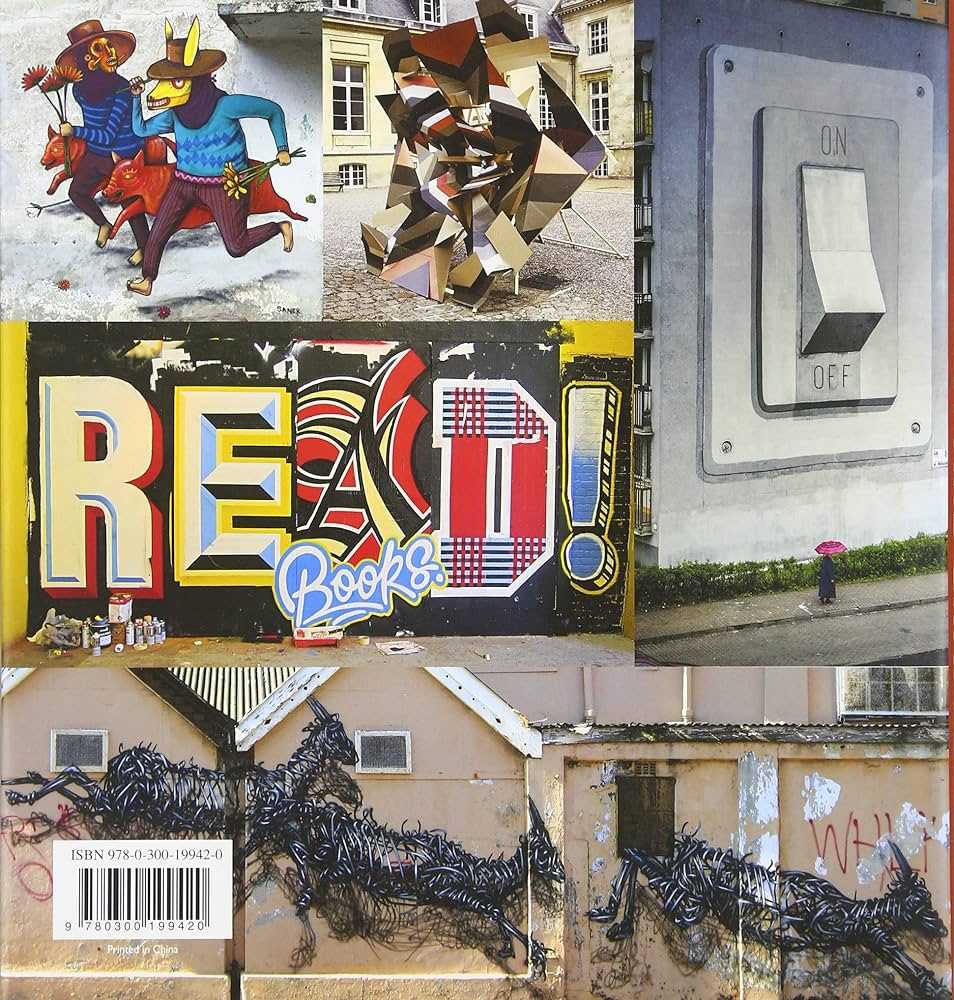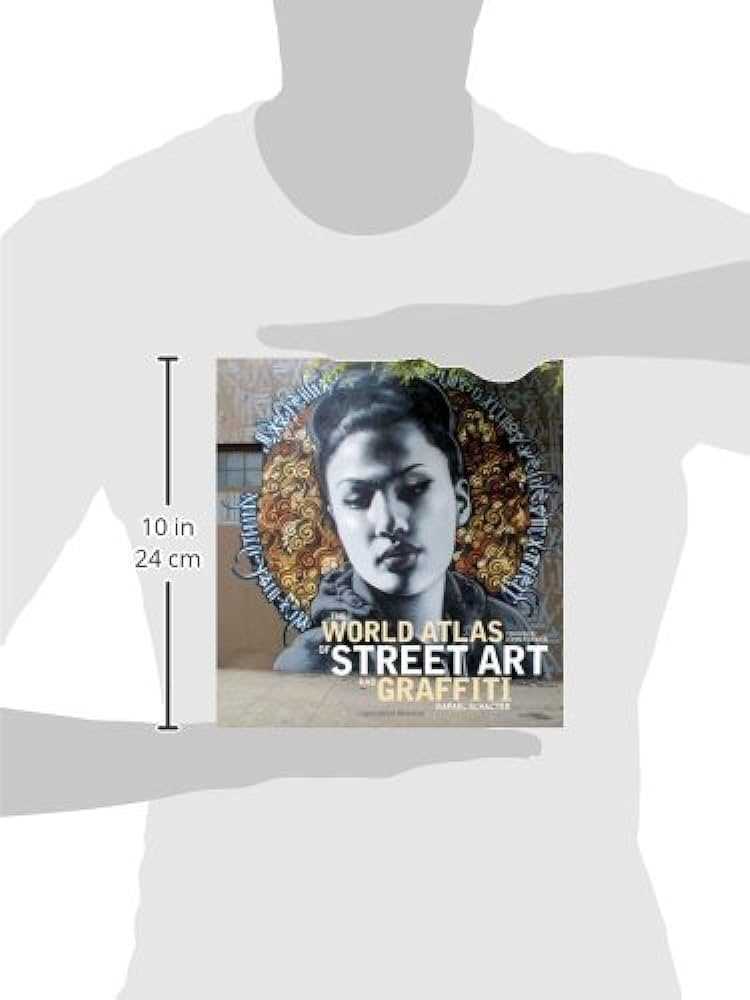
Street art has emerged as a vibrant and dynamic form of expression that captivates people all over the world. It represents a fusion of creativity, rebellion, and social commentary, transforming ordinary city walls and public spaces into captivating canvases. Unlike traditional art forms found in galleries, street art is accessible to everyone, creating a unique and intimate connection between the artist and the viewer.
The World of Street Art: A Comprehensive Overview delves into the multifaceted realm of urban art, exploring its history, notable artists, and evolving techniques. From the early days of graffiti to the rise of stencils, wheat-pasting, and countless other artistic methods, this article takes you on an enlightening journey through the fascinating world of street art.
Street art is not just an act of defiance against societal norms; it carries a powerful message that reflects the sentiments and struggles of a community. It has the ability to challenge political ideologies, raise awareness about social issues, and spark conversations that might otherwise be left unspoken. This form of artistic expression has the potential to transcend cultural boundaries and unite people from diverse backgrounds, igniting a collective sense of creativity and activism.
In recent years, the appreciation for street art has reached new heights, with cities around the world embracing and celebrating this unconventional form of artistic expression. Street art festivals, guided tours, and exhibitions have become popular attractions, attracting both local residents and tourists who are eager to witness the transformation of public spaces by talented artists. Through this article, you will gain a profound understanding of the significance and impact of street art in today’s world.
Mural: Artistic Masterpieces on Public Walls
Street art has evolved over the years, encompassing various forms and styles. One of the most prominent and striking forms of street art is the mural. Murals are large-scale paintings or artworks created on public walls, often with a political or cultural message.
Unlike graffiti, which is usually done quickly and illicitly, murals are typically commissioned and legally created. They can be found in cities all around the world, transforming ordinary walls into vibrant and thought-provoking artistic masterpieces.
The History of Murals
Murals have been an integral part of human culture for centuries. From ancient cave paintings to Renaissance frescoes, murals have been used to convey stories, record history, and celebrate culture.
However, it wasn’t until the 20th century that murals gained recognition as a legitimate art form. The Mexican muralist movement, led by artists such as Diego Rivera, José Clemente Orozco, and David Alfaro Siqueiros, played a significant role in popularizing murals as a means of social and political commentary.
The Impact of Murals
Murals have the power to transform the urban landscape and create a sense of identity and belonging within communities. They can beautify neighborhoods, spark conversations, and address social issues. Whether it’s a mural depicting local history, cultural diversity, or a call to action, these art pieces have the ability to generate emotions and provoke thought.
Murals also provide a platform for artists to express themselves freely and share their artistic vision with a wider audience. They can serve as a visual representation of collective memory, cultural heritage, and social change.
Moreover, murals have become tourist attractions in many cities, attracting visitors from around the world. These large-scale artworks have the ability to draw attention to overlooked areas and transform them into destinations.
Wheatpaste: A Traditional Method with a Modern Twist

Wheatpaste is a traditional method of creating street art that has been used for centuries. It involves mixing flour and water to create a paste that can be used as an adhesive to stick artwork to walls and other surfaces. This technique has its roots in ancient cultures and was later popularized by artists like Shepard Fairey and Banksy.
How It Works

To create wheatpaste, an artist starts by mixing wheat flour or cornstarch with water to form a paste. This mixture is then applied to the back of a printed image, typically a poster or a stencil, and then carefully adhered to a chosen surface. The paste dries clear, leaving the artwork in place.
This technique allows artists to create large-scale murals and street art installations without causing damage to the surfaces they are working on. Wheatpaste is easily removable and does not leave behind any residue or marks.
A Modern Twist

While wheatpaste is a traditional technique, many artists have found innovative ways to incorporate it into their work and give it a modern twist. Some artists use digital printing techniques to create highly detailed and vibrant images, which are then applied using wheatpaste. This combination of traditional and modern techniques allows for the creation of street art that is both visually striking and technically impressive.
Additionally, artists have experimented with different types of paper and materials to create unique textures and effects with their wheatpaste artwork. By using materials such as rice paper or textured wallpaper, artists can add an extra dimension to their work and create a tactile experience for viewers.
Wheatpaste has become a popular method for street artists to share their creativity and make a statement in public spaces. Its versatility and accessibility make it an attractive option for artists of all skill levels, and its temporary nature adds an element of impermanence to the art form.
Overall, wheatpaste is a traditional method that has evolved with the times to become a staple technique in the world of street art. Whether used to create bold and eye-catching murals or subtle and thought-provoking installations, wheatpaste offers artists a unique way to express themselves and engage with the urban environment.
Stencil: Creating Intricate Designs with Precision

Stencil is a popular technique in the world of street art that allows artists to create intricate designs with precision. This technique involves creating a template, usually made of cardboard or other sturdy material, with cut-out sections that form the desired design.
The process begins with the artist creating a design on a piece of paper or computer software. Once the design is finalized, the artist carefully cuts out the desired sections using a craft knife or laser cutter. The resulting stencil is then ready to be used.
When it comes to applying the stencil to a wall or other surface, artists have a few different methods to choose from. Some artists prefer to use spray paint, while others use a brush or roller to apply paint through the stencil. Regardless of the chosen method, the key is to carefully align the stencil with the surface to ensure a clean and precise design.
One of the advantages of stencils is their ability to be easily reproduced. Once a stencil is created, it can be used multiple times to create identical designs. This makes stencils a popular choice for artists who want to quickly create large-scale murals or repeat patterns.
In addition to their practicality, stencils also open up a world of creative possibilities. Artists can experiment with different stencil designs, layering them on top of each other to create depth and complexity in their artwork. They can also play with different color combinations and textures, allowing for endless variations in their creations.
Overall, stencils are a versatile tool that allows street artists to create intricate and detailed designs with precision. Whether used for small-scale stenciling or large-scale murals, this technique adds depth and complexity to the world of street art.
Bombing: The Underground Culture of Street Art

Bombing is a term used to describe the covert and often illegal act of creating graffiti art in public spaces. It is a central aspect of the underground culture of street art, where artists seek to challenge societal norms and reclaim their urban environments.
The Origins of Bombing

Bombing can be traced back to the early days of street art in the 1970s, when it emerged as a form of self-expression for marginalized communities in New York City. Graffiti writers began using the city as their canvas, using spray paint and markers to create vibrant and often political artworks.
What sets bombing apart from other forms of street art is its focus on quantity and visibility. Bombing is characterized by the repetition of a single tag or artwork in a variety of locations, often in highly visible places such as train cars, bridges, and walls. This widespread presence serves as a way for graffiti writers to establish their presence and gain recognition within the street art community.
The Code of Bombing
Despite its rebellious nature, bombing has its own set of unspoken rules and codes. Artists respect each other’s work, avoiding painting over or defacing another artist’s piece without permission. This unwritten code promotes a sense of camaraderie and mutual respect among graffiti writers.
Bombing also has its own language. Graffiti writers develop unique tags and aliases to sign their work, allowing them to leave their mark anonymously. These tags often become recognizable signatures within the street art community, with artists using them to build their reputation and gain respect.
Bombing as an Art Movement
Bombing has evolved beyond its controversial beginnings to become a recognized art movement. Street art festivals and exhibitions showcasing graffiti artwork have gained popularity worldwide, giving these underground artists a platform to showcase their talents and challenge traditional art norms.
Bombing exemplifies the rebellious and creative spirit of street art, embodying the desire to take art out of galleries and into the public realm. It continues to be a powerful form of self-expression and a way for artists to assert their presence in the urban landscape.
Graffiti: Expressing Urban Identity through Bold Tags

Graffiti has long been a vibrant form of self-expression and a way for urban communities to assert their identities. It is a visually striking art form that uses bold tags, intricate designs, and powerful messages to captivate and engage viewers.
Street artists often use graffiti to reclaim public spaces and challenge the status quo. By appropriating walls, signs, and other surfaces, they transform mundane urban landscapes into vibrant canvases that reflect the spirit and energy of the community.
One of the defining features of graffiti is its bold tags. These are stylized signatures or monikers that serve as calling cards for the artists. Tags are typically created using bold, vibrant colors and intricate designs that make them visually striking and hard to ignore.
While some may view graffiti as vandalism, it is important to recognize its significance as a form of urban expression. Graffiti gives a voice to marginalized communities and allows them to communicate their ideas, beliefs, and experiences in a visually powerful way.
The bold tags and vibrant designs of graffiti also serve as a form of identity for street artists themselves. Artists often develop unique styles and signatures that distinguish them from others in the community. These tags become symbols of their individuality and creative vision.
Graffiti has evolved over the years and is now celebrated as a legitimate art form. It has found its way into galleries, museums, and public installations, gaining recognition and respect from the art world at large. However, its roots in the streets remain strong, and graffiti continues to be a powerful means of self-expression for urban communities around the world.
Spray: The Weapon of Choice for Street Artists

When it comes to creating art on the streets, spray paint is the preferred medium for street artists. Its versatility, ease of use, and vibrant colors make it the perfect tool for creating eye-catching pieces in public spaces.
Spray paint allows street artists to quickly cover large areas with bold and intricate designs. The high-pressure cans produce a fine mist that can be controlled to create detailed lines and shapes. This makes it possible for artists to create murals and graffiti that are visually stunning and communicate powerful messages.
In addition to its practical benefits, spray paint also holds a symbolic significance for street artists. It is often associated with rebellion and the subversion of societal norms. The act of illegally spraying paint on public walls is seen as an act of defiance and an expression of individuality. Street artists use spray paint as a means to reclaim public spaces and challenge the authority of the established art world.
However, spray paint is not without its limitations. Weather conditions, such as wind and rain, can make it difficult to work with spray paint outdoors. Additionally, the use of spray paint without permission is illegal in many places, which means that street artists must often work quickly and covertly. This can limit the amount of time and detail they are able to put into their pieces.
Despite these challenges, spray paint remains the weapon of choice for street artists. Its unique properties and associations make it the perfect medium for creating art in the urban environment. Street artists continue to push the boundaries of what is possible with spray paint, bringing color and creativity to the streets for all to enjoy.
| Advantages of Spray Paint for Street Art | Disadvantages of Spray Paint for Street Art |
|---|---|
| • Versatility | • Weather conditions |
| • Ease of use | • Illegality |
| • Vibrant colors | • Limited time and detail |
| • Can cover large areas quickly | |
| • Fine mist for detailed lines and shapes |
Street Art Photography: Capturing the Essence of Urban Art

Street art is an integral part of urban culture, and it is constantly evolving. Each city has its own unique blend of murals, graffiti, and other forms of street art that reflect the cultural and social climate of the area. Street art photography allows us to capture and preserve these ephemeral artistic expressions.
Through the lens of a camera, street art photographers are able to document the vibrant and dynamic nature of urban art. They capture the essence of these artworks, highlighting the details, colors, and textures that make them so unique. Whether it’s a large-scale mural covering the side of a building or a guerilla-style stencil on a street corner, street art photography allows us to appreciate the creativity and artistic talent behind these works.
Moreover, street art photography also provides a platform for artists to showcase their creations, reach a wider audience, and gain recognition for their work. Photographers often collaborate with street artists to document their artwork, helping to promote and preserve their artistic contributions to the urban landscape.
Street art photography is not just about capturing beautiful images; it is also a way to explore and understand the social, cultural, and political messages conveyed by these artworks. Street art often addresses important issues such as inequality, gentrification, and environmental concerns. By documenting and sharing these artworks through photography, we can raise awareness and initiate conversations about these topics.
Legal Street Art: Balancing Creativity and City Regulations

Street art has become a prominent form of artistic expression in cities around the world. However, the legality of street art can vary greatly depending on the city and its regulations. Balancing the right to artistic freedom with the need to maintain a clean and orderly urban landscape is a challenging task for both artists and city officials.
Many cities have specific regulations regarding street art, aiming to strike a balance between allowing artistic expression and preserving public property. These regulations often require artists to obtain permits or permissions before creating graffiti or murals in public spaces.
One approach that many cities have adopted is to designate specific areas for legal street art. These designated zones provide a space where artists can freely express themselves without fear of legal repercussions. These areas often act as creative hubs, attracting not only local artists but also tourists and art enthusiasts from around the world.
Another factor that influences the legality of street art is the nature of the artwork itself. Artworks that are deemed offensive, disrespectful, or harmful to public property are more likely to be met with legal consequences. In contrast, artworks that convey positive messages or enhance the overall aesthetic of the city are more likely to be tolerated or even celebrated.
Engaging the community in the process of creating street art can also help to alleviate potential conflicts between artists and city officials. Collaborative projects that involve local residents and businesses can foster a sense of ownership and pride in the artwork, reducing the likelihood of vandalism or defacement.
Ultimately, striking a balance between creativity and city regulations is crucial for the continued growth and recognition of street art as a legitimate form of artistic expression. By establishing clear guidelines, fostering community engagement, and designating legal spaces for street art, cities can create an environment where artists can thrive while maintaining the beauty and integrity of their urban landscapes.

I am a mural enthusiast and a fervent admirer of street art. Rather than creating murals myself, I am passionate about collecting them. My love for street art knows no bounds. I am dedicated to curating and cherishing these artworks that grace the streets. My collection stands as a testament to my profound appreciation for this form of artistic expression.
read about me



